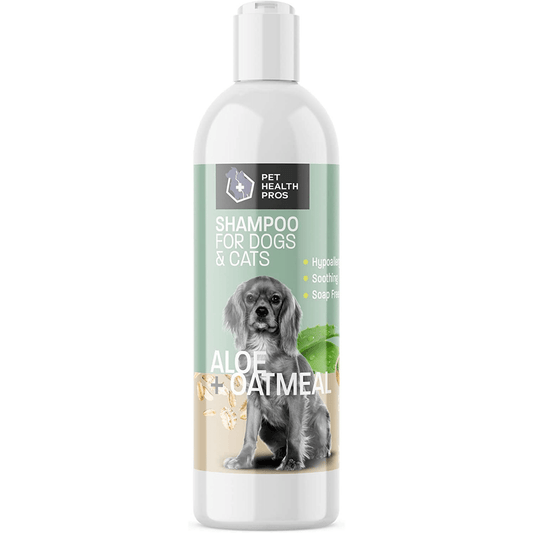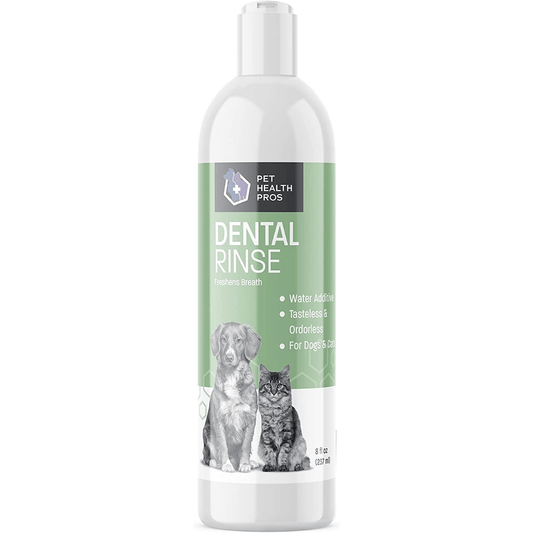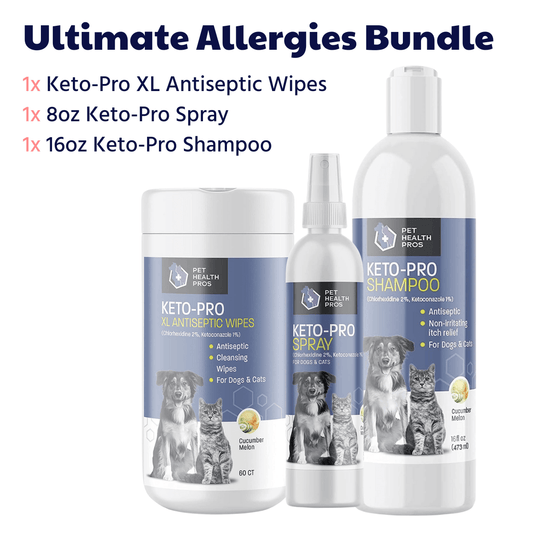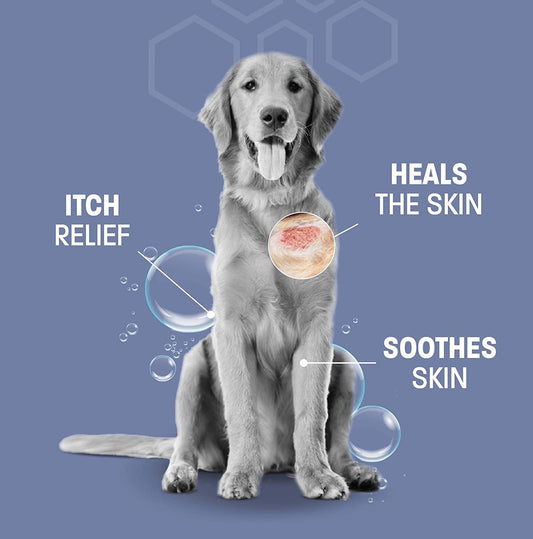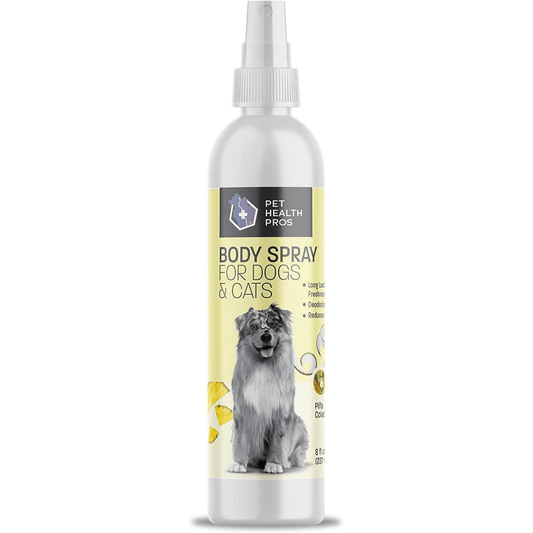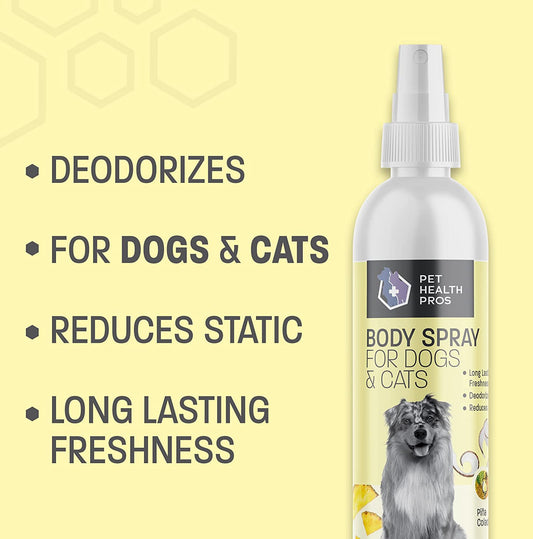Ear cleaning is an important aspect of dog grooming that should not be overlooked. Regular cleaning helps prevent ear infections and maintains overall ear health. One effective and convenient method of ear cleaning is using ear wipes specifically designed for dogs. In this article, we will discuss the importance of ear cleaning for dogs, how to choose the right ear wipes, a step-by-step guide to cleaning your dog's ears, common mistakes to avoid, and tips for maintaining healthy ears in dogs.
Key Takeaways
- Regular ear cleaning helps prevent ear infections and maintains overall ear health in dogs.
- Choosing the right ear wipes for your dog is important to ensure effective cleaning.
- Factors to consider when selecting ear wipes include the ingredients, fragrance, and size of the wipes.
- Proper technique for cleaning your dog's ears involves gentle wiping and avoiding insertion into the ear canal.
- If your dog is resistant to ear cleaning, try using positive reinforcement and seeking professional help if needed.
Why is Ear Cleaning Important for Dogs?
Understanding the Anatomy of a Dog's Ear
To properly clean your dog's ears, it's important to understand the anatomy of a dog's ear. A dog's ear is divided into three main parts: the outer ear, the middle ear, and the inner ear. The outer ear includes the ear flap (pinna) and the ear canal. The middle ear contains the eardrum (tympanic membrane) and the small bones (ossicles) that transmit sound vibrations. The inner ear is responsible for balance and contains the cochlea, which is responsible for hearing.
Common Ear Problems in Dogs
Ear problems are common in dogs and can cause discomfort and pain. Ear infections are one of the most common ear problems in dogs. They can be caused by bacteria, yeast, or allergies. Symptoms of an ear infection may include itching, redness, swelling, discharge, and a foul odor. Another common ear problem in dogs is ear mites. These tiny parasites can cause intense itching and irritation. If left untreated, ear mites can lead to secondary infections. Additionally, dogs with long, floppy ears are more prone to developing ear hematomas, which are pockets of blood that form under the skin of the ear flap. Ear hematomas can be painful and may require medical intervention.
The Benefits of Regular Ear Cleaning
Regular ear cleaning is an essential part of maintaining your dog's overall health and well-being. By regularly cleaning your dog's ears, you can prevent a variety of ear problems and ensure their ears are clean and free from debris. Clean ears can help prevent ear infections and reduce the risk of other ear-related issues. Additionally, regular ear cleaning allows you to monitor your dog's ear health and detect any potential problems early. It is recommended to clean your dog's ears at least once a month, or more frequently if your dog is prone to ear issues.
Choosing the Right Ear Wipes for Your Dog
Types of Ear Wipes Available
When it comes to ear wipes for dogs, there are several options available in the market. Disposable ear wipes are a popular choice as they are convenient and hygienic. These wipes are designed for one-time use and can be easily disposed of after cleaning your dog's ears. Another option is reusable ear wipes, which are made from washable materials. These wipes can be used multiple times, making them a more eco-friendly choice. Additionally, there are ear wipes with specialized formulas, such as those that contain soothing ingredients or have antibacterial properties. These wipes can be beneficial for dogs with specific ear conditions or sensitivities.
Factors to Consider When Selecting Ear Wipes
When selecting ear wipes for your dog, there are several factors to consider. Effectiveness is an important factor to keep in mind. You want to choose ear wipes that are specifically designed to effectively clean your dog's ears. Look for wipes that are gentle yet effective in removing dirt, debris, and excess wax.
Another factor to consider is safety. It's crucial to choose ear wipes that are safe for your dog's ears. Avoid wipes that contain harsh chemicals or irritants that could potentially cause discomfort or allergic reactions.
Convenience is also worth considering. Look for ear wipes that are easy to use and convenient for both you and your dog. Wipes that are pre-moistened and individually wrapped can be more convenient for on-the-go use or when traveling.
Lastly, price may be a factor for some pet owners. While it's important to prioritize quality, finding ear wipes that are within your budget can also be a consideration.
Tips for Using Ear Wipes Safely
When using ear wipes to clean your dog's ears, it is important to follow some safety guidelines to ensure the well-being of your pet. Here are some tips to help you use ear wipes safely:
- Avoid inserting the wipe too deep into the ear canal: Gently clean the visible parts of the ear, avoiding any excessive pressure or pushing the wipe too far.
- Use a fresh wipe for each ear: This helps prevent the spread of bacteria or infection from one ear to another.
- Observe your dog's reaction: Pay attention to any signs of discomfort or pain during the cleaning process. If your dog shows signs of distress, stop immediately and consult your veterinarian.
Remember, proper use of ear wipes can help maintain your dog's ear health and prevent common ear problems. By following these safety tips, you can ensure a positive and effective ear cleaning experience for your furry friend.
Step-by-Step Guide to Cleaning Your Dog's Ears
Gathering the Necessary Supplies
Before you start cleaning your dog's ears, it's important to gather all the necessary supplies. Having everything ready will make the process smoother and more efficient. Here are some essential items you will need:
- Ear wipes: Choose a high-quality ear wipe specifically designed for dogs. Look for wipes that are gentle, non-irritating, and effective in removing dirt and debris.
- Cotton balls or pads: These can be used to dry the ears after cleaning and to apply any necessary ear medication.
- Ear cleaning solution: Use a veterinarian-recommended ear cleaning solution that is safe for dogs. Avoid using any harsh or irritating substances.
- Treats: Having some treats on hand can help make the ear cleaning experience more positive for your dog.
Remember to always follow the instructions on the ear wipe packaging and consult your veterinarian if you have any concerns or questions.
Preparing Your Dog for Ear Cleaning
Before you begin cleaning your dog's ears, it's important to prepare them for the process. This will help ensure a more comfortable and successful cleaning experience. Here are a few steps to follow:
-
Find a quiet and calm environment: Choose a location where your dog feels relaxed and secure. This will help reduce any anxiety or stress they may have during the ear cleaning.
-
Gather the necessary supplies: Before you start, gather all the supplies you'll need, such as ear wipes, cotton balls, and ear cleaning solution. Having everything ready beforehand will make the process smoother.
-
Get your dog used to touch: Gently touch your dog's ears and reward them with treats or praise. This will help desensitize them to the sensation of having their ears touched.
-
Use positive reinforcement: Throughout the ear cleaning process, use positive reinforcement techniques to reward your dog for their cooperation. This can include treats, praise, or a favorite toy.
Remember, it's important to be patient and gentle when preparing your dog for ear cleaning. By following these steps, you can help create a positive association with ear cleaning and make the experience more pleasant for both you and your dog.
Proper Technique for Cleaning the Ears
Cleaning your dog's ears requires a gentle and careful approach to avoid causing any discomfort or injury. Here are the steps to follow for proper ear cleaning:
- Start by gathering the necessary supplies, including ear wipes, cotton balls, and ear cleaning solution.
- Hold your dog's head steady and gently lift the ear flap to expose the ear canal.
- Apply a small amount of ear cleaning solution to a cotton ball or ear wipe.
- Gently wipe the visible part of the ear canal using the cotton ball or ear wipe. Avoid inserting anything deep into the ear canal.
- Repeat the process on the other ear if necessary.
Remember to always be gentle and patient when cleaning your dog's ears. If your dog shows signs of discomfort or pain, stop the cleaning process and consult your veterinarian.
Dealing with Resistant Dogs
Some dogs may be resistant to having their ears cleaned, making the process challenging for both the owner and the pet. If your dog is showing signs of resistance, it's important to approach the situation with patience and care. Here are some tips to help you clean your dog's ears effectively even if they are resistant:
- Take it slow: Introduce the ear cleaning process gradually, allowing your dog to get used to the sensation and smell of the ear wipes.
- Use positive reinforcement: Reward your dog with treats and praise during and after the ear cleaning session to create a positive association.
- Pay attention to body language: Watch for signs of discomfort or stress in your dog's body language, such as pulling away, growling, or showing signs of anxiety. If your dog is exhibiting these signs, take a break and try again later.
Remember, it's important to be gentle and patient when dealing with resistant dogs. With time and consistent positive reinforcement, your dog will become more comfortable with the ear cleaning process.
Common Mistakes to Avoid When Cleaning Your Dog's Ears
Using Improper Tools or Products
Using the wrong tools or products to clean your dog's ears can lead to potential harm or discomfort. It's important to use ear wipes specifically designed for dogs. These wipes are formulated to effectively remove dirt, debris, and excess wax from the ears without causing irritation. Avoid using cotton swabs or other sharp objects, as they can damage the delicate structures inside the ear. Additionally, using human ear cleaning solutions or products not intended for dogs can also be harmful. Always choose products that are safe and approved for use on dogs.
Overcleaning or Undercleaning
Overcleaning or undercleaning your dog's ears can lead to various problems. Overcleaning can strip away the natural oils in the ear canal, leading to dryness and irritation. On the other hand, undercleaning can allow wax and debris to build up, creating a breeding ground for bacteria and yeast. It's important to find the right balance and clean your dog's ears regularly, but not excessively.
To avoid overcleaning or undercleaning, follow these tips:
- Use a gentle ear cleaning solution or wipes specifically designed for dogs.
- Clean your dog's ears once a week or as recommended by your veterinarian.
- Be gentle and avoid inserting anything deep into the ear canal.
- Observe your dog's behavior and look for signs of discomfort or irritation.
Remember, if you're unsure about how often to clean your dog's ears or if you notice any unusual symptoms, it's always best to consult with your veterinarian for guidance and advice.
Neglecting to Check for Signs of Infection
Neglecting to check for signs of infection in your dog's ears can lead to serious health issues. Ear infections are common in dogs and can cause discomfort, pain, and even hearing loss if left untreated. It is important to regularly inspect your dog's ears for any signs of infection, such as redness, swelling, discharge, or a foul odor.
To check for signs of infection, gently lift your dog's ear flap and examine the ear canal. Look for any abnormalities, such as excessive wax buildup, debris, or signs of inflammation. If you notice any of these signs, it is important to consult your veterinarian for proper diagnosis and treatment.
Preventing ear infections is key to maintaining your dog's ear health. Keep your dog's ears clean and dry, and avoid exposing them to excessive moisture, which can create a breeding ground for bacteria and yeast. Regularly cleaning your dog's ears with appropriate ear wipes can help remove dirt, debris, and excess wax, reducing the risk of infection.
Remember, early detection and treatment of ear infections can prevent further complications and ensure your dog's comfort and well-being.
Tips for Maintaining Healthy Ears in Dogs
Regular Inspection and Cleaning
Regular inspection and cleaning of your dog's ears is crucial for maintaining their ear health. By regularly checking your dog's ears, you can catch any potential issues early on and prevent them from developing into more serious problems. Inspecting your dog's ears involves looking for any signs of redness, swelling, discharge, or foul odor. If you notice any of these symptoms, it may indicate an infection or other ear problem, and you should consult your veterinarian.
In addition to regular inspection, cleaning your dog's ears is also important. This helps remove excess wax, dirt, and debris that can accumulate in the ear canal and potentially lead to infections. To clean your dog's ears, you can use a veterinarian-recommended ear cleaning solution and cotton balls or pads. Be gentle when cleaning and avoid inserting anything deep into the ear canal to prevent injury.
To maintain healthy ears, it is recommended to clean your dog's ears at least once a month or as advised by your veterinarian. This frequency may vary depending on your dog's breed, activity level, and individual ear health. Regular inspection and cleaning, along with proper grooming and veterinary care, can help ensure your dog's ears stay healthy and free from problems.
Preventing Moisture Build-up
Moisture build-up in a dog's ears can lead to various ear problems, including infections and discomfort. To prevent moisture build-up, it is important to keep your dog's ears dry and clean. Here are some tips to help you prevent moisture build-up:
- After your dog swims or gets wet, gently dry their ears with a clean towel. Moisture trapped in the ears can create a breeding ground for bacteria and yeast.
- Avoid using cotton swabs or any other objects to clean your dog's ears, as they can push debris further into the ear canal and cause damage.
- Regularly inspect your dog's ears for any signs of redness, swelling, or discharge. If you notice any abnormalities, consult your veterinarian for further evaluation.
Remember, maintaining dry and clean ears is essential for your dog's ear health and overall well-being.
Seeking Veterinary Care When Needed
While regular inspection and cleaning of your dog's ears can help maintain their health, it is important to seek veterinary care when needed. Your veterinarian is the best resource for diagnosing and treating any ear problems your dog may have. They have the expertise and tools to properly examine your dog's ears and determine the underlying cause of any issues. If you notice any signs of infection, such as redness, swelling, discharge, or a foul odor, it is crucial to consult with your vet as soon as possible. They can prescribe appropriate medication and provide guidance on how to effectively clean your dog's ears. Remember, early intervention is key to preventing more serious complications.
Maintaining healthy ears in dogs is essential for their overall well-being. Regular ear cleaning and inspection can help prevent infections and discomfort. Here are some tips to keep your dog's ears healthy: 1. Clean the ears regularly using a veterinarian-recommended ear cleaner. 2. Avoid using cotton swabs or any sharp objects to clean the ears, as they can damage the delicate ear canal. 3. Check for any signs of redness, swelling, or discharge in the ears, as these may indicate an infection. 4. Keep your dog's ears dry, especially after swimming or bathing. Excess moisture can create a breeding ground for bacteria and yeast. 5. Trim the hair around the ears to allow better air circulation. 6. If you notice any persistent ear problems or unusual behavior, consult your veterinarian for a thorough examination. Taking care of your dog's ears is an important part of their overall health. Visit Pet Health Pros for a wide range of affordable and high-quality pet health supplies. Shop with confidence knowing that our products are made in the USA and backed by a 100% satisfaction guarantee.
Conclusion
In conclusion, ear wipes are a convenient and effective solution for keeping your dog's ears clean and healthy. With their gentle formula and easy-to-use design, ear wipes provide a hassle-free way to remove dirt, debris, and excess wax from your dog's ears. Regular use of ear wipes can help prevent ear infections and maintain optimal ear hygiene. Remember to consult with your veterinarian for specific instructions on how to use ear wipes and to address any underlying ear issues. So, give your furry friend the care they deserve and make ear cleaning a part of their regular grooming routine!
Frequently Asked Questions
How often should I clean my dog's ears?
It is recommended to clean your dog's ears once a week, or as advised by your veterinarian. Some dogs may require more frequent cleaning if they are prone to ear infections or have excessive wax buildup.
Can I use regular baby wipes to clean my dog's ears?
No, it is not recommended to use regular baby wipes to clean your dog's ears. Baby wipes may contain ingredients that are not safe for dogs and can cause irritation or allergic reactions. It is best to use ear wipes specifically designed for dogs.
How do I know if my dog has an ear infection?
Signs of an ear infection in dogs may include excessive scratching or rubbing of the ears, redness or swelling of the ear canal, discharge or odor from the ears, and discomfort or pain when the ears are touched. If you suspect your dog has an ear infection, it is important to consult with your veterinarian for proper diagnosis and treatment.
Can I use cotton swabs to clean my dog's ears?
No, it is not recommended to use cotton swabs to clean your dog's ears. Cotton swabs can push debris further into the ear canal and potentially damage the eardrum. It is safer to use ear wipes or a soft, damp cloth to clean the outer part of the ear.
What should I do if my dog is resistant to ear cleaning?
If your dog is resistant to ear cleaning, it is important to approach the process with patience and positive reinforcement. Gradually introduce ear cleaning by starting with short sessions and rewarding your dog with treats or praise. If your dog continues to resist, consult with a professional dog trainer or your veterinarian for further guidance.
Are there any breeds that require more frequent ear cleaning?
Some dog breeds, such as those with long, floppy ears or excessive hair in the ear canal, may be more prone to ear problems and require more frequent ear cleaning. Breeds like Cocker Spaniels, Basset Hounds, and Poodles are examples of breeds that may need extra attention to their ears.


